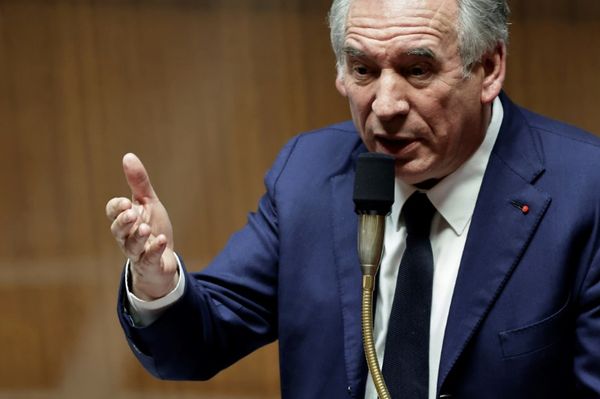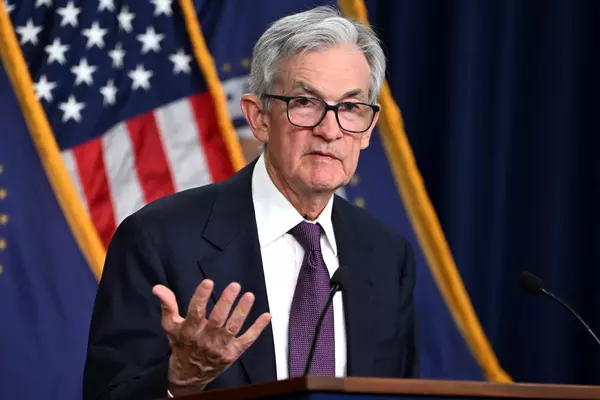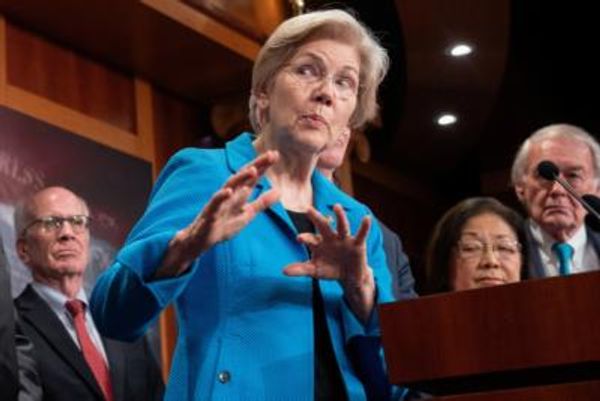By Vincent Wong and Hon-Sing Wong
Tensions with the police have reached a breaking point in the wake of the death of HKUST student Alex Chow Tsz-lok, who succumbed to his injuries on November 8 after falling from a parking garage where police were dispersing protesters. On November 10, riot police fired tear gas into multiple university campuses, a traffic cop shot an unarmed protestor with live ammunition in broad daylight, and a police motorcyclist was filmed ramming into protestors, in one of the movement’s most traumatic days yet.
There are comprehensive reports detailing the police’s excessive and indiscriminate use of force throughout this year’s protests. In addition to live ammunition, police have fired thousands of rounds of tear gas, rubber bullets, beanbag rounds, and sponge-tipped bullets. Police have maimed and blinded journalists and first-aid workers, and reportedly tortured detainees. As of early November, well over 3,000 protesters have been arrested, and hundreds of people have been charged with “rioting,” which carries a penalty of up to ten years imprisonment. As many as one-third of those arrested are minors.

Despite widespread condemnation of the police tactics, including from the UN High Commissioner for Human Rights and four UN Special Rapporteurs, the Hong Kong Police Force (HKPF) has thus far enjoyed impunity for their actions. Only a single officer (the motorcyclist who rammed into protesters) has been suspended; no officers have been charged. While the government insists the public can file “complaints” against police misconduct, the force has consistently refused to display their warrant card numbers, and even obtained a court injunction to prevent anyone from disclosing officers’ personal details.
Surveys have found protesters’ primary motivation is “expressing dissatisfaction with police’s handling of the protests.” This helps explain the staying power of the movement, which continues to insist on “Five Demands, Not One Less,” including an independent inquiry into the HKPF’s use of force.
As the protests roll into their sixth consecutive month, many in the movement have begun to make a “sixth demand”— to disband the HKPF altogether. The remarkable uptake of this demand has sparked debate around exactly what dissolution of the HKPF would entail: reconstitution and reform? Or a more radical type of abolitionist politics?
The Hong Kong police’s job is to protect the establishment
Hong Kong has a long tradition of struggle against its unjust social, political, and economic order. For just as long, the police has played an integral role in maintaining the status quo.
According to Norman Miners and Raymond Lau, the HKPF was originally formed as a paramilitary force to maintain British colonial order in the face of a hostile Chinese population. Like its counterparts across the colonized world, the HKPF supplemented the British military garrison to deter Chinese people from attempting to retake the territory.
The HKPF was routinely brought out to put down labor uprisings, notably the 1922 Seaman’s Strike as well as the 1967 “leftist riots,” a strike-turned-uprising against the colonial government. In both these instances, the colonial government enacted the Emergency Regulations Ordinance (ERO) to grant itself sweeping powers to put down dissent. Last month, Hong Kong Chief Executive Carrie Lam once again enacted the ERO as part of a police escalation against protesters which, as Wilfred Chan and JN Chien write, “makes clear the continuity between the British colonial regime and the Chinese authoritarian state.”

This time, many protesters have openly called to disband the police force. Yet Carrie Lam has seemed unable to even comprehend the demand. In a recent Q&A with Hongkongers over Facebook, the Chief Executive responded to the idea with bemusement:
I’m puzzled when I hear this, because when there are public order and safety issues, such as theft or unfortunate attacks, people say they must ask police to follow up seriously. So police are playing a very important role, and we must support them in law enforcement.
Lam’s response betrays her positioning within Hong Kong’s hierarchy. What can Lam mean by “public order” or “safety issues,” when police have shown almost no concern for the victims of targeted hits on pro-democratic figures, indiscriminate mob attacks, or their own vicious and rampant police brutality? Like the many rulers of Hong Kong before her, Lam knows the police’s true role is to protect the city’s elite from the demands of the citizenry.
Abolition means democracy
We have much to learn from the work of the Black liberation movement, which has long made the connection between the criminal justice system and the maintenance of an unequal race and class based social order in the United States. In Are Prisons Obsolete?, Angela Davis argues that, despite its formal abolition in 1865, slavery was simply replaced by institutions like lynching, segregation, and incarceration. Today, all federal prisoners in the United States are forced to work for pennies an hour, in a “wide-ranging corporatization of punishment that has produced a prison industrial complex.”
A similarly extractive system exists in Hong Kong. In 2017, the total commercial value of products and services produced by a daily average of 4,529 people in criminal detention engaged in industrial work was HK$454.1 million — despite prisoner-laborers earning a mere fraction of the already-abysmal Hong Kong minimum wage.
Feeding Hong Kong’s prison industrial complex is a broader socio-economic structure that renders certain groups of people vulnerable and targets them for policing. Police brutality is nothing new for marginalized Hongkongers, be they sex workers, undocumented migrants or members of racialized communities. The fact that Han Chinese Hongkongers are now targeted as well should remind us that no one is exempt. As Jun Pang points out, criminality in Hong Kong has always been a malleable label used by the state to justify its own violence as it seeks to uphold the status quo.
To counter this system, we may draw inspiration from Angela Davis’ framework of “abolition democracy,” which calls for “an array of social institutions that would begin to solve the social problems that set people on the track to prison, thereby helping to render the prison obsolete.” Davis suggests that one way to achieve this is the full-scale democratization of political and economic institutions. This helps us tie the sixth demand to our broader struggle to create a more democratic Hong Kong.

Challenging assumptions of prosecutorial justice
As Pang notes, this year’s movement shows “[a]n abolitionist politic for Hong Kong is not only possible; it is already in the making.” This work begins by exposing the flawed logic of the criminal justice system.
Writing in a U.S. context, Georgetown Law professor Allegra McLeod offers a vital critique of the “prosecutorial” conception of justice—which also undergirds Hong Kong’s legal system. First, she notes, criminal prosecutions generally fail to address the needs of survivors of harm. Instead, they focus on punishment of the accused while squeezing the victim through a complex, dehumanizing, and potentially retraumatizing criminal process with no guarantee of securing an apology, punishment, or reparations.
Second, the criminal legal process completely neglects the underlying socioeconomic causes of the problems at hand, so that they are almost certain to occur again. It does not, in the words of renowned prison abolitionist Ruth Wilson Gilmore, address the elements that are required for a productive and violence-free life, such as equitable access to jobs, education, housing, health care.
Neither does there seem to be a correlative relationship between greater policing and greater public order. In fact, as the anarchist collective Crimethinc argues, the increasing militarization of police may even contribute to uprisings, as “a population rendered expendable by globalization and automation can only be integrated into the functioning of the economy at gunpoint.”
Finally, the criminal legal process is structurally incapable of delivering justice or accountability for state-perpetrated violence, in part because prosecutors are fundamentally compromised by ties and reliance on policing.
As the Hong Kong protests have shown, anyone can be dragged through this flawed criminal system. This should give pause to those who believe that security and justice can be achieved simply by reforming the police force.

Making abolition possible
How can we achieve safety and justice without the police and the criminal legal system? We know getting rid of the police is not enough. Instead, as activist and writer Harsha Walia explains, abolition is a generative exercise of the “imagining and generating of alternative institutions and relations … while also prefiguring societies based on equity, mutual aid, and self-determination.” These alternatives are already being practiced.
In an abolitionist framework, justice centers the needs of survivors and, as Allegra McLeod writes, attempts to hold perpetrators of harm accountable “in ways that do not degrade but seek to reintegrate, while understanding the root causes of wrongdoing and working to address them.”
For example, in Chicago, abolitionist community groups have entirely forgone pursuing punitive criminal justice for survivors of police torture by focusing on facilitating an ongoing and public dialogue between survivors, activists, and educators. The Chicago Torture Justice Memorials project has appropriated more than five million dollars in reparations for survivors, and creating a center that provides medical, mental health, and other support services to survivors of police trauma.
Hongkongers have developed powerful mutual aid practices within this year’s protest movement — which may well be the building blocks for our abolitionist future.
Abolitionist justice offers us alternative ways of preventing and addressing violence outside of policing and the courts, often by enabling community members to intervene before conflicts escalate. Advance Peace, pioneered in Richmond, California, relies on mediators to intervene in disputes, and also provides financial support and mentorship to young people to prevent violent disputes. The Oakland Power Projects offers another approach to addressing harm, in which street medics and healthcare workers train residents in de-escalation and community-based healthcare.
While clearly not all harm can be prevented through these measures, such harm is poorly addressed by existing penal measures. Rather than rely on prosecutorial justice, abolitionists respond to violence through processes of transformative justice, which work toward creating accountability and changing social relations in the aftermath of harm. These are community-based approaches which respond to violence by building community support and safety for anyone harmed, addressing the broader context of why the harm occurred, and intervening in processes that change the context so that the harm is less likely to happen again.

From activism to abolition
Struggles against police violence, in Hong Kong and around the world, are critical sites for the development of abolitionist politics. The uprisings led by Black Americans against police brutality in the cities of Ferguson (2014) and Baltimore (2015) allow us to consider how activists facing similar forms of violence have imagined alternative futures. (We also remember with gratitude the way some Ferguson protestors reached out to Hongkongers in solidarity as our simultaneous struggles against police violence unfolded in 2014.)
In the wake of the protests in Ferguson and Baltimore, both the U.S. Department of Justice (DOJ) and an umbrella civil society organization called the Movement for Black Lives (M4BL) each issued reports on the root causes of protests and proposed recommendations for action. Both reports were remarkably similar in their accounts of police violence and their articulation of the problem: the legal system had not held police accountable to Black communities; police used violence with impunity against vulnerable people; the problems were systemic and not isolated. Despite these similarities in diagnosis, their proposed solutions revealed the difference between reformist and abolitionist approaches.
According to the DOJ report, the main problem was that police officers were not following the law. As a result, the DOJ issued various reform-based recommendations: better training, body cameras, and investing more resources into police. The report did not address the disenfranchisement of policed communities and their lack of structural power to hold police accountable. It did not account for the fact that, regardless of the law or internal guidelines, police are rarely indicted, prosecuted, or sentenced for killing civilians.
In contrast, the M4BL’s report, A Vision for Black Lives, directly named the structures of inequality that disproportionately expose marginalized communities to police violence. It adopted an abolitionist ethic in its proposed solutions, which would shift resources from “the large footprint of policing, surveillance, and incarceration … into social programs in Black communities: housing, health care, jobs, and schools.”
To that end, the report made six core demands: (1) an end to the war on Black people, (2) reparations, (3) invest-divest, (4) economic justice, (5) community control, and (6) political power. These demands are vital steps in a gradual project to get to the ultimate goal of abolition. Further, it is noted that abolition was being continually practiced in communities without need for the government to “catch up.”

Abolition in Hong Kong is now
Despite the “sixth demand,” the Hong Kong movement’s critique of police violence has yet to cohere into an explicit abolitionist politics. Some proposed solutions—such as giving greater independent investigative and enforcement power to the Independent Police Complaints Council (IPCC) or the establishment of an independent commission of inquiry into police conduct—suggest reform rather than abolition. Other proposals, to democratize the management of police and delegate daily police tasks to volunteer or auxiliary police, stop short of calling for abolition.
But that does not mean abolitionism is not already present. Indeed, Hongkongers have developed powerful mutual aid practices within this year’s protest movement—which may well be the building blocks for our abolitionist future.
For instance, the general public’s distrust of the HKPF has spread to the healthcare system, partially in response to allegations of information sharing that could allow for the police to identify protesters and conduct mass arrests at hospitals. In response, Hongkongers have established underground clinics as a way to provide healthcare while evading the state. Volunteer healthcare providers operate mobile clinics through borrowed cars to avoid detection by the police.
These clinics have treated injuries ranging from eye inflammation, diarrhoea, bone fractures, facial injuries, and respiratory symptoms caused by tear gas inhalation to bruises, sprains, and blisters. Volunteer medics also engage in mutual aid practices in relation to emotional and mental healthcare; building networks to connect people with social workers and counsellors to address mental health needs and suicide prevention.
In the shadow of police impunity, Hongkongers have taken it upon themselves to do the painstaking work of collecting evidence on alleged violations of human rights abuses by the HKPF. For example, a citizens’ group called NOPAID (Netizens Organizing Police Abuse Investigation Data) launched a detailed report outlining day-by-day evidence of suspected police transgressions while on duty. This is an example of community-based truth finding that exists outside the formal criminal justice system, particularly where the latter has failed in its obligation to prevent, investigate, and resolve incidents of harm.

Other examples of mutual aid practices in defiance of the Hong Kong government predate the protests. According to Elene Lam, former director of Zi Teng, sex workers in Hong Kong have long been unable to avail themselves of police protection against robbers and serial perpetrators of sexual assault due to criminalization and stigma. If sex workers called the police, they could be strip-searched by officers and threatened with arrest. As a result, sex workers have developed communal measures for protection. They have created a telephone network to report violence, set up self-defense classes, trained workers and allies to share information on aggressors, gathered their own evidence for investigation, and collectively advocated for reform with police and judges. The most important thing, Lam says, is not how these community-centered strategies affect aggressors, but how they offer sex workers greater agency in their lives.
In another notable case in 2001, Hong Kong’s Education Department published an advisory warning primary and secondary schools receiving government funds not to enroll children without legal status as Hong Kong permanent residents. In response to this exclusionary policy, Bishop Joseph Zen wrote a request to all 300 Catholic schools to reject the government directive and take in these children, despite warnings from the government that this would be considered a criminal act. The next year, a leftist activist founded the Right of Abode University, providing classes on topics like English, music, and law to people whom the government refused to grant full immigration status. These structures served as extralegal spaces addressing material needs that were relatively autonomous from state authority.
The examples above are not meant to be exhaustive, but are representations of a future that is fighting to be born. They are instructive in terms of the prefigurative politics that currently exist in Hong Kong, which allow us to imagine and begin building a society that does not depend on police, where values like freedom, justice, security, and community do not inevitably fall upon on systems of carceral state power. We therefore struggle together towards a deeper understanding of the possibilities of police abolition in Hong Kong — truly a revolution of our times.
READ NEXT: Hong Kong Police Raid University After All-Night Siege
The News Lens was authorized to republish this article from Lausan. Read the Chinese version of this article here.
TNL Editor: Daphne K. Lee (@thenewslensintl)
If you enjoyed this article and want to receive more story updates in your news feed, please be sure to follow our Facebook.







